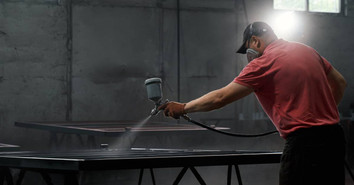If you've ever owned a car, boat, or any other metal item, chances are you've had to deal with rust. Oxidation can weaken the structure of metal objects, making them unsafe and less durable. It can also create a mess, leaving surfaces covered in unsightly reddish-brown patches.
But how do you protect your valuables from corrosion? These are the key things to know when applying rust-preventive coatings.
What Are Rust Preventive Performance Coatings?
Rust-preventive performance coatings are specialized products designed to protect metal surfaces from rust and corrosion. These coatings form a protective barrier that prevents moisture and oxygen from reaching the metal, thereby stopping the rusting process before it starts. Additionally, some coatings contain rust inhibitors, which chemically react with the metal surface to make it less reactive to corrosive elements.
Types of Rust Preventive Coatings
Traditional Finish Replicators
These coatings are specifically formulated to mimic the appearance of traditional paint finishes while providing superior protection against rust and corrosion. They come in a variety of colors and finishes, allowing users to maintain the aesthetic appeal of their metal objects without sacrificing durability. Whether you're looking to protect a classic car or your new boat, traditional finish replicators can offer an ideal solution that combines style and function.
Special Purpose Coatings
Beyond traditional finish replicators, there are various special-purpose coatings designed to meet specific needs and enhance performance in challenging environments. These coatings include high-temperature resistance coatings, which are formulated to prevent the coating from flaking or peeling off in extreme heat, making them perfect for automotive parts and industrial applications. Additionally, there are surface fillers, which are ideal for removing imperfections such as scratches or dents.
Special Effect Coatings
Special effect coatings go beyond traditional rust prevention by introducing unique aesthetics and functionalities to metal surfaces. These coatings can include metallic finishes, which provide a shimmering, reflective quality, enhancing the visual appeal of metal surfaces. Additionally, there are glow-in-the-dark phosphorescent coatings that not only protect the metal but also add a creative twist by allowing surfaces to emit light in low visibility conditions.
Application: Aerosol Versus Liquid Spray Gun
When it comes to applying auto paint coatings for rust prevention, the choice between aerosol and liquid spray gun methods can significantly impact the results. Aerosol spray cans offer convenience and ease of use, making them ideal for small projects or touch-ups. They allow for even application without the need for additional equipment, and cleanup is minimal. However, aerosol cans can sometimes produce overspray, leading to wasteful use of product and less control over the application.
On the other hand, using a liquid spray gun provides greater control and consistency, especially for larger surfaces. Spray guns can deliver thicker coatings, which may enhance protective properties and allow for the adjustment of spray patterns and pressure to suit specific project needs. While the setup and cleanup of a spray gun can be more involved than using aerosols, the potential for more efficient application and reduced product waste makes it a preferred choice for professional applications.
Protect Your Metal Surfaces for Years To Come
Rust-preventive performance coatings are an essential tool for protecting all sorts of metal surfaces, but there are a few key things to know before choosing one for yourself. Understanding what these coatings are, how they work, and how to apply them will ensure your assets remain in top condition for years to come.

